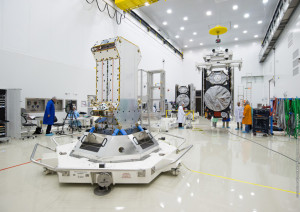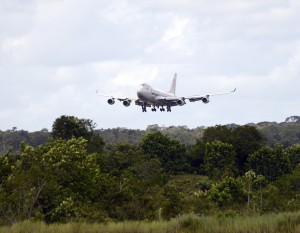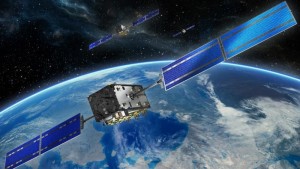
During activity in the Spaceport’s S1A clean room facility, both spacecraft completed the initial “fit check” process, in which they were installed on the dispenser system that will deploy them in orbit during the May 24 flight.
The two FOC (Full Operational Capability) Galileo satellites were then removed, enabling their continued preparation and fueling. Prime contractor OHB System in Bremen, Germany produces the Galileo FOC spacecraft. Read more…



